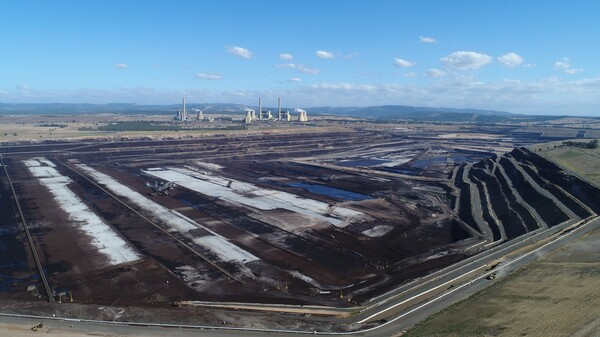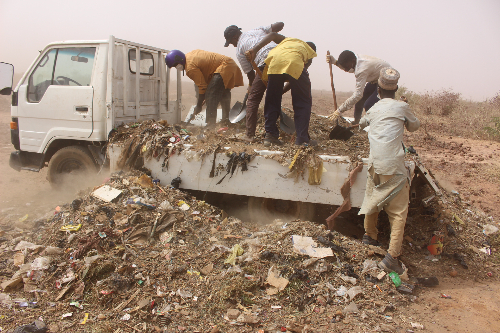J-STORIES - Before leaving Australia, the cargo on the ship was compressed to one eight-hundredths of its usual size. And to ensure it reached Japan safely, it was stored at minus 253 Celsius, even as it passed through the tropical heat of the equator.
That unusual cargo was liquefied hydrogen produced in Australia. Early this February, it arrived at the southern Japanese port of Kobe, the world’s first test voyage to transport liquefied hydrogen.
.jpg)
The test was organized by a Tokyo-based technology research group called Hystra, whose seven corporate members include Kawasaki Heavy Industries and Iwatani Corporation. The aim of the project is to create a new supply chain for liquefied hydrogen as part of Japan's efforts to become a decarbonized society.
Hydrogen has the potential to be a green energy source that produces no CO2 when burned. When it is used in fuel cells it only emits water vapor. A number of countries are working on technology to compress hydrogen, store it and transport it in large quantities.
The hydrogen carried by the Hystra ship was produced from Australian brown coal. Since Australia’s reserves of the fuel are estimated as equivalent to 240 years of Japan’s energy consumption, a new hydrogen supply chain could be an important way to meet Japan’s future energy needs.

Making the hydrogen from brown coal, however, produces CO2. So, the research group is also working on technology to separate out the greenhouse gas. Its target is a commercialized and fully carbon-free supply chain by around 2030.
This April the heads of the seven Hystra companies held a ceremony to mark the successful completion of the test. This event was also attended by Japanese Prime Minister Fumio Kishida.
A spokesman for Hystra said: “We feel there was great significance in how, in this demonstration test, we could set up a supply route across national borders, from making hydrogen to storing it.”
“We now want to set up a larger-scale supply chain, leading to lower hydrogen cost and wider distribution," he said. "If we achieve that, we can also help combat global warming.”
Translation and Editing by Tony McNicol
Top page photo by dolgachov/Envato
For inquires about this article, please contact us at jstories@pacificbridge.jp
***
***
Click here for the Japanese version of the article.

![[Tokyo Updates] Is Hill-Farmed Salmon Here to Save Us?](https://storage.googleapis.com/jstories-cms.appspot.com/images/173258722885374_09952-thumb-1600xauto-10881_smallthumbnail.jpeg)
![[Tokyo Updates] Old and Full of Potential: Why a Swedish Model Is Reviving Abandoned Houses in Tokyo](https://storage.googleapis.com/jstories-cms.appspot.com/images/1732603609687d6b0a861ef75d954729578323092323fe00ad55e-thumb-1600xauto-10186_smallthumbnail.jpg)
![[Tokyo Updates] Making Space Development Open for All](https://storage.googleapis.com/jstories-cms.appspot.com/images/1732521298402c3af387cf9df027b91f0e9f2626b300713b93850-thumb-1600xauto-10594_smallthumbnail.jpg)

![[Podcast] Japanese technology to supercharge human fertility (Part 3)](https://storage.googleapis.com/jstories-cms.appspot.com/images/1766558713084place-for-scientific-research-2025-03-07-14-08-49-utc%20(1)_bigthumbnail.jpeg)
![[Interview: Part 2] A digital approach to tackle child hunger in Japan with dignity](https://storage.googleapis.com/jstories-cms.appspot.com/images/1766130666509unnamed_bigthumbnail.jpg)
![[Podcast] Japanese technology to supercharge human fertility (Part 2)](https://storage.googleapis.com/jstories-cms.appspot.com/images/1765863548035unnamed-7_bigthumbnail.jpg)
![[Podcast] Japanese technology to supercharge human fertility (Part 1)](https://storage.googleapis.com/jstories-cms.appspot.com/images/1765440905082unnamed_bigthumbnail.jpg)
_bigthumbnail.jpeg)





![[Interview] When digital and physical worlds meet](https://storage.googleapis.com/jstories-cms.appspot.com/images/1747974430456unnamed-2_smallthumbnail.png)




_smallthumbnail.jpeg)

![[Interview: Part 1] From nourishing souls to feeding the hungry](https://storage.googleapis.com/jstories-cms.appspot.com/images/1763695595492unnamed_smallthumbnail.jpg)

